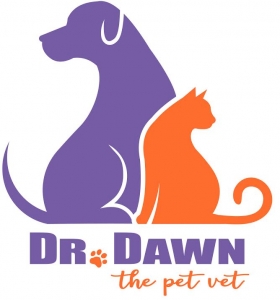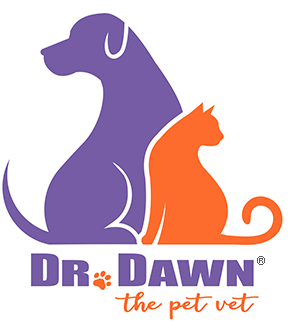This time of year there are several extra items around the house, some of which pose risks to our pets. I have a kitty patient that is a perfect example of the problems the presence of a Christmas tree can present. He propels himself midway into the tree, knocking off balls that fall to the ground and splinter glass shards around the home, for he and the two dogs in the home to step on. He then scales the tree to it’s 11 ft height, and then down again.
Spraying Febreze on the tree can help deter a pet, but it needs to be used daily. Also try a mixture of 50:50 red-pepper sauce and water spritzed onto the whole tree.
Try anchoring the tree itself with 200-lb invisible fishing wire from the trunk to a hook on your wall or ceiling. This will keep it from toppling over while being “scaled” by adventurous climbers.
Also, live Christmas tree water may contain preservatives and small amounts of fertilizers, which may cause an upset stomach if ingested. Try to refill the water often, and cover the bowl with a tree skirt to prevent access.
There are plenty of other winter hazards for our pets. See how well you do on this quiz.
1. Which wintertime activity is most likely to be hazardous to your pet?
A. Walking in a winter wonderland
B. Hiking on a chilly morning.
C. Cuddling up by the fireplace.
2. When you return from a wintertime walk with your furry friend, what’s the first thing you should do?
A. Send them to the water bowl for a drink
B. Wipe their paws with a warm, damp cloth
C. Snuggle under a blanket to warm up
3. When sitting down to your favorite winter comfort foods, which should be placed the farthest out of paw’s reach?
A. White meat turkey
B. Hot chocolate
C. Roasted sweet potatoes
4. Which common holiday horticultural item is the most hazardous to pets?
A. Poinsettias
B. Mistletoe
C. Christmas tree water
5. What’s the most preventable health issue pets face in the winter?
A. Obesity
B. Foreign body ingestion
C. Parasites
6. How many treats per day should your pet be allowed to indulge in during the holidays?
A. One- it’s called a “treat” for a reason!
B- Two- one after each meal (as dessert)
C. As many as they want – its the holidays, after all!
So, some of the questions were less challenging than others. Let’s see how you did…
1. Pets are more likely to suffer burns from fireplaces or candles than catch either hypothermia or frostbite. Never leave pets unsupervised near an open fireplace. Block dogs and cats access to lit candles.
3. Before you sit own to snuggle, wipe your pet’s paws. Rock salt can cause cuts on sensitive paw pads, and hazardous ice-melting chemicals may be tracked in and inadvertently ingested while pets lick their feet. Plus, ice and snow can freeze on paws, making them cold and sore.
3. Hot chocolate contains both cocoa and caffeine, which both can cause mild to severe health issues in pets, depending in the amount consumed. Avoid access to it. At the very least, you don’t want to be cleaning up mess after they have gotten sick. Plain turkey and sweet potatoes can actually be fine in moderation, but when they are heavily spiced or fatty, they can also wreak havoc. Bland is best if you want to offer a bit of either.
4. As discussed, tree water can cause stomach upset. So can poinsettias, resulting in vomiting and illness. But, mistletoe berries can be lethal.
5. Even the most diligent pet parents can’t avoid the risks for foreign body ingestions and parasitic infections. But, pet obesity is completely preventable.
6. And on that note…over-indulging does not have to be a holiday tradition. Calories in treats and table scraps add up, contributing to obesity and illnesses. One treat a day should be fine. If you feel compelled to give more “treats”, hand out their kibble, while putting a little less in the bowl, so that the total calories are the same.

Happy winter… Happy holidays… and Happy New Year!
Dr. Dawn
Please share and subscribe here











Great article. I never knew about febrile!
Great article. I never knew about febreze!